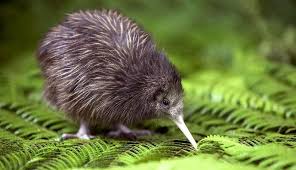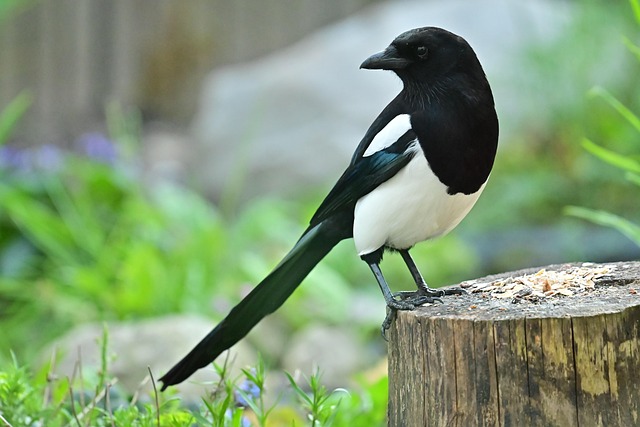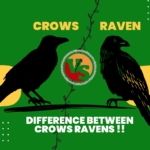The Kiwi bird is one of the world’s most unique and interesting birds. It is flightless bird, native to New Zealand, small in size, with a long beak, and nocturnal. Unlike other birds, the Kiwis possess a highly developed sense of smell, aiding them in their nocturnal quest to locate food. Despite their cuteness, Kiwi birds are threatened by habitat destruction, predation by introduced species, and human interference. In this article, we’ll be discussing everything you need to know about the Kiwi bird, including detailed biodata, types, interesting facts, and conservation status.
Know All About The Kiwi Bird – A Small Size Flightless Bird
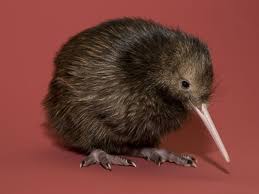
| Attribute | Details |
|---|---|
| Common Name | Kiwi Bird |
| Scientific Name | Apteryx |
| Kingdom | Animalia |
| Phylum | Chordata |
| Class | Aves |
| Order | Apterygiformes |
| Family | Apterygidae |
| Genus | Apteryx |
| Number of Species | 5 |
| Average Lifespan | 25-50 years |
| Size | 25 to 45 cm (9.8 to 17.7 in) |
| Weight | 1.3 to 3.3 kg (2.9 to 7.3 lb) |
| Habitat | Forests, grasslands, and shrublands of New Zealand |
| Distribution | Endemic to New Zealand |
| Diet | Insects, worms, seeds, and berries |
| Activity | Nocturnal |
| Flight Ability | Flightless |
| Beak Length | Long and slender (about 4 inches) |
| Sense of Smell | Highly developed |
| Eyesight | Poor |
| Feather Type | Hair-like and soft |
| Nesting Type | Ground burrows |
| Clutch Size | 1-2 eggs |
| Egg Size | Largest in proportion to body size among birds |
| Egg Incubation Period | 70-85 days |
| Male Role | Primary incubator of eggs |
| Female Role | Lays eggs |
| Mating System | Monogamous |
| Territorial | Yes |
| Predators | Stoats, cats, dogs, ferrets |
| Conservation Status | Varies by species (some endangered) |
| Protection Laws | New Zealand conservation programs |
| Unique Feature | Nostrils at the tip of the beak |
| Social Behavior | Solitary |
| Communication | Hissing, growling, and snorting |
| Speed | Up to 12 mph (19 km/h) |
| Blood Temperature | Warm-blooded |
| Egg-to-Body Ratio | 20% of the mother’s body weight |
| Foot Structure | Strong claws for digging |
| Digging Ability | Excellent |
| Vocalization | High-pitched calls |
| Adaptation to Environment | Well-camouflaged |
| Bone Structure | More mammal-like than bird-like |
| Feather Color | Brownish-gray |
| Defense Mechanism | Kicking and running |
| Grooming | Uses beak |
| Longevity in Captivity | Longer than in the wild |
| Breeding Season | June to March |
| Threat Level | High due to habitat destruction |
| Evolutionary Age | Over 30 million years old |
| Closest Relatives | Ostriches, emus, cassowaries |
| Unique Traits | Only bird with nostrils on its beak |
| Endemic Regions | North and South Islands of New Zealand |
| Reproduction Rate | Low |
| Parental Care | High |
| Brain-to-Body Ratio | Large compared to other birds |
| Conservation Efforts | Kiwi Recovery Programme |
| Human Interaction | Rare in the wild |
| Sensory Adaptations | Strong smell, weak eyesight |
| Daily Activity | Foraging at night |
| Migration | Non-migratory |
| Egg Hardness | Soft-shelled |
| Fat Storage | High for survival |
| Unique Physiology | Lacks a tail |
| DNA Similarity | Closer to extinct moa than other birds |
| Lifespan in Zoos | Can exceed 50 years |
| Domestication | Not suitable |
| Symbolism | National symbol of New Zealand |
| Adaptation to Cold | Thick feathers |
| Conservation Status by Species | Varies (some endangered) |
Types of Kiwi Bird
There are five species of Kiwi birds, each with different characteristics. These include:
- Brown Kiwi (Apteryx mantelli) is the most common one, which lives on the North and South Islands of New Zealand.

- Great Spotted Kiwi (Apteryx haastii) is the largest Kiwi species, with his grayish-brown plumage.
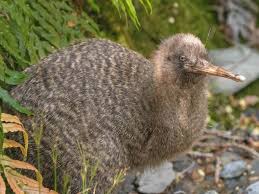
- Little Spotted Kiwi (Apteryx owenii) is the smallest one, mostly living on islands without predators.
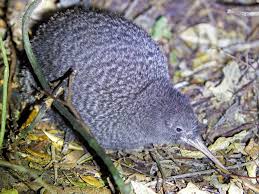
- Rowi Kiwi (Apteryx rowi) Grey-brown coloured bird native to Okarito.
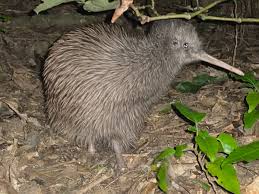
- Tokoeka Kiwi (Apteryx australis) The tokoeka inhabits sub-populations within and also has distributions found in parts of Fiordland and on Stewart Island
Interesting Facts About Kiwi Birds
- Largest Egg-to-Body Ratio – A Kiwi bird lays an egg almost the size of its body.
- Nostrils at the Tip of the Beak – Kiwi is one of the birds which possesses actual nostrils at the end of its beak.
- Highly Developed Sense of Smell – Unlike other birds, the Kiwi draws the food using the sense of smell instead of vision.
- Hair-like Feathers – Kiwi feathers look like hair, so they are different from other birds.
- Nocturnal Lifestyle– Kiwis are nocturnal; this means that they move around at night when searching for insects and worms.
- Strong Legs – Their legs comprise a large percentage of their body weight, so they can run fast and fight back.
- Monogamous Bonding– Kiwi birds normally mate for life and remain faithful to one mate.
- Ancient Origins – Fossil evidence shows that Kiwis have been in existence for millions of years.
- Flightless Evolution – Kiwis evolved to become flightless as there were no natural predators when ancient New Zealand was first formed.
- Cultural Symbol – The Kiwi is a national symbol of New Zealand, and people from New Zealand are often called “Kiwis.”
FAQ’s
Kiwi birds are special, flightless birds, found only in New Zealand. They have nostrils at the end of long beaks and possess an outstanding sense of smell, and the kiwi bird lays the largest eggs relative to body size in all birds. The soft hair-like feathers and nocturnal lifestyle make them pretty fascinating creatures.
Yes, a kiwi does lay eggs and in fact holds the record in terms of bird species as a laying of larger eggs in its proportionate to its body structure. A single kiwi lays an egg around 20 percent of the parent’s body. A male usually incubates their egg for an approximate 70-85 days until it can hatch.
Kiwi birds have a rather varied diet with insects, earthworms, small invertebrates, seeds, berries, and fungi forming the bulk of their diet. They forage at night by using their long beaks and highly developed sense of smell. They probe into the ground searching for hidden prey.
Yes. Kiwi birds can swim. Not only are kiwi flightless, but surprisingly, they are good swimmers. They use their powerful legs to get around in the water to cross small rivers or lakes when necessary. But mostly, they tend to stay on land in their native forested habitats.
All birds are warm-blooded, so Kiwi birds are included. They have hair-like feathers that are thick and provide for insulation. Kiwi birds can tolerate cooler temperatures but obviously prefer temperate climates. They even seek burrows for shelter due to New Zealand’s cool and damp forests.
Kiwi birds sleep in burrows, hollow logs, or dense vegetation. Kiwis are nocturnal, meaning they rest during the day and become active at night. They dig their burrows using their strong legs and claws, which provide a safe and hidden shelter from predators and harsh weather conditions.
Kiwi birds generally live for a pretty long time. In the wild, their lifespan is between 25 and 50 years, depending on the species and environmental conditions. Some kiwis have been reported to live longer than 50 years if kept in captivity and taken care of and protected from predators.
No, This Is One Of The Flightless Bird.
Conclusion
One of the most peculiar birds in the world, Kiwi birds symbolize the biodiversity of New Zealand. Although these birds are flightless, they have adapted incredibly well to their environment with powerful legs, an acute sense of smell, and a nocturnal lifestyle. Nevertheless, their survival is constantly under threat due to habitat destruction and predation by invasive species. More preservation efforts must be done for Kiwi populations for future generations. The more one learns about these birds, the more interesting and important their place in the ecosystem is realized and the better supported conservation initiatives become.
Share if you loved this article on Kiwi bird, and help to spread awareness for their conservation!

